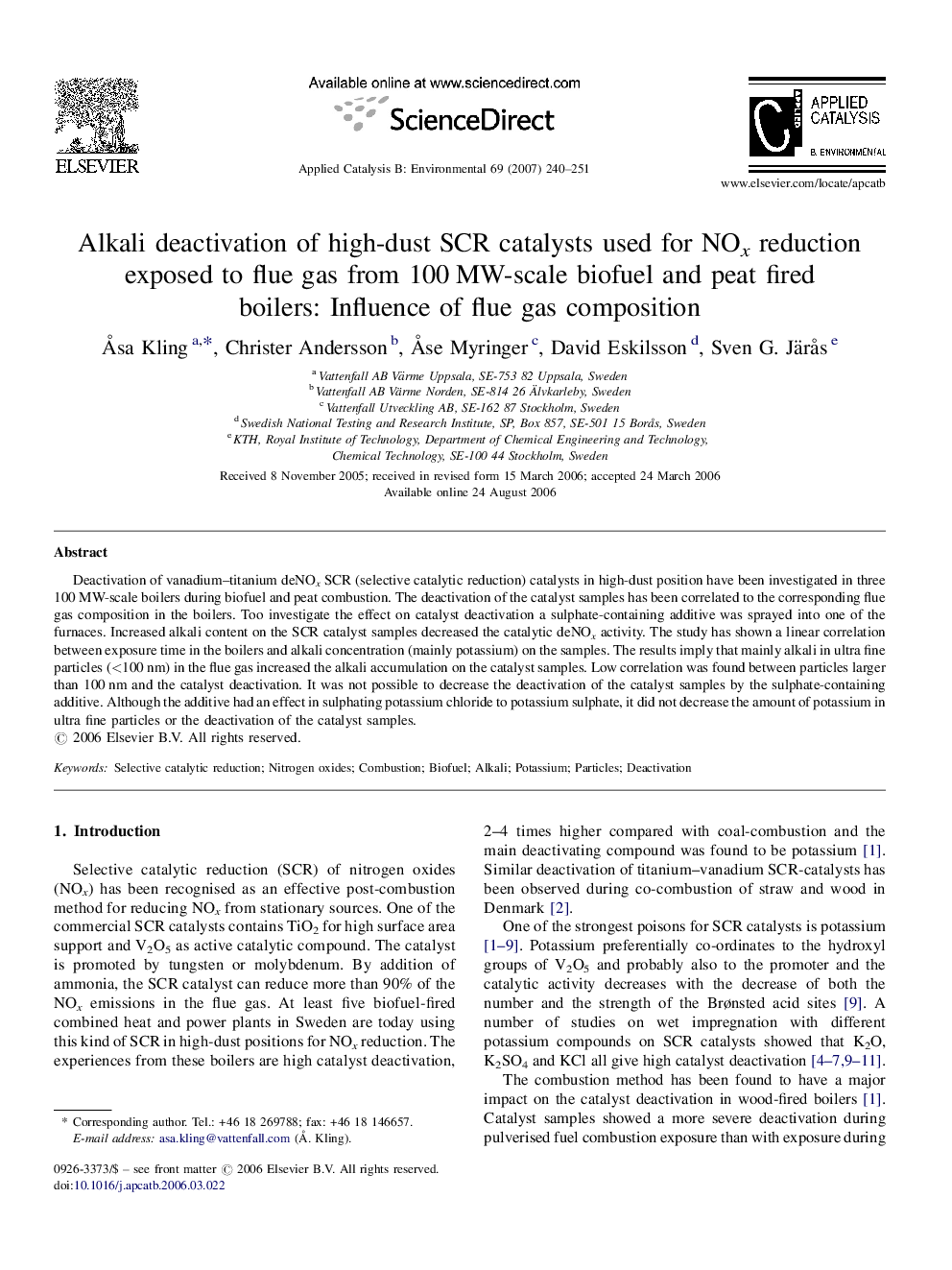| Article ID | Journal | Published Year | Pages | File Type |
|---|---|---|---|---|
| 48624 | Applied Catalysis B: Environmental | 2007 | 12 Pages |
Deactivation of vanadium–titanium deNOx SCR (selective catalytic reduction) catalysts in high-dust position have been investigated in three 100 MW-scale boilers during biofuel and peat combustion. The deactivation of the catalyst samples has been correlated to the corresponding flue gas composition in the boilers. Too investigate the effect on catalyst deactivation a sulphate-containing additive was sprayed into one of the furnaces. Increased alkali content on the SCR catalyst samples decreased the catalytic deNOx activity. The study has shown a linear correlation between exposure time in the boilers and alkali concentration (mainly potassium) on the samples. The results imply that mainly alkali in ultra fine particles (<100 nm) in the flue gas increased the alkali accumulation on the catalyst samples. Low correlation was found between particles larger than 100 nm and the catalyst deactivation. It was not possible to decrease the deactivation of the catalyst samples by the sulphate-containing additive. Although the additive had an effect in sulphating potassium chloride to potassium sulphate, it did not decrease the amount of potassium in ultra fine particles or the deactivation of the catalyst samples.
